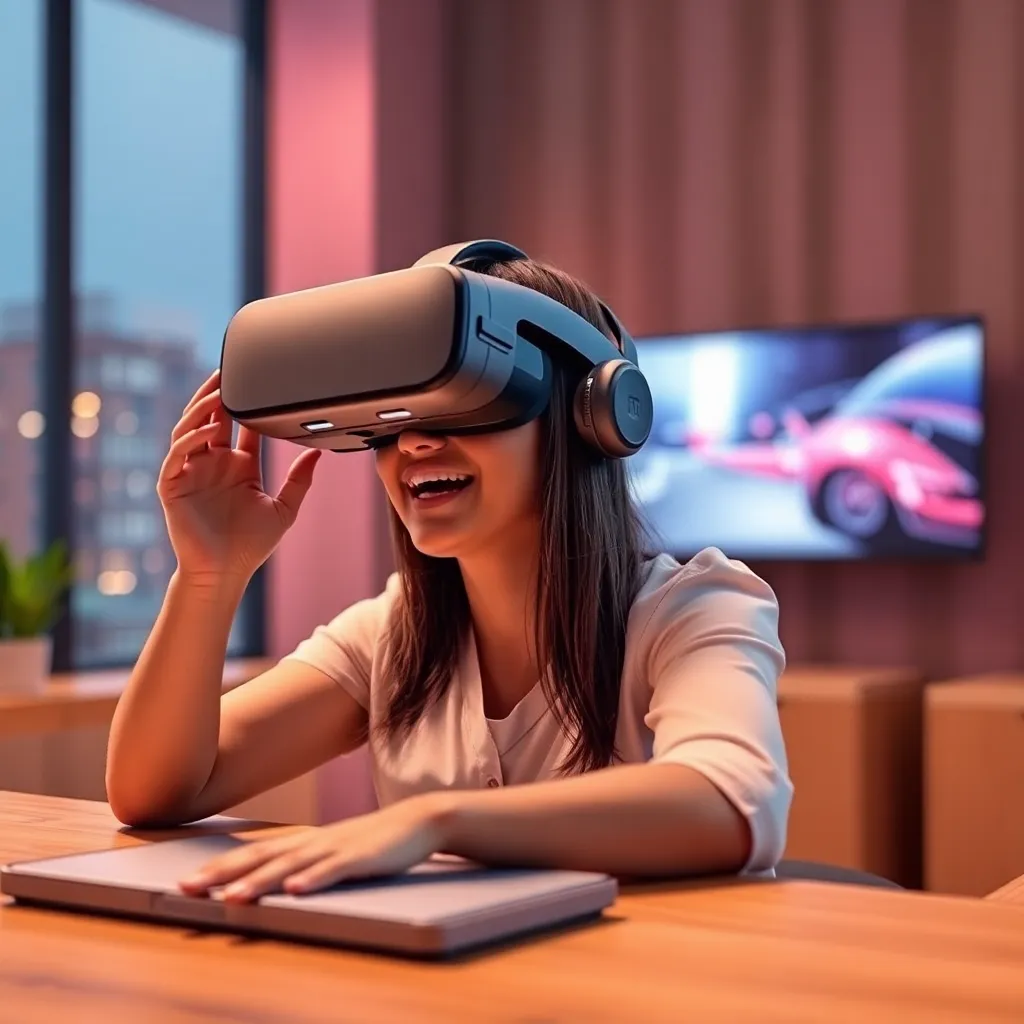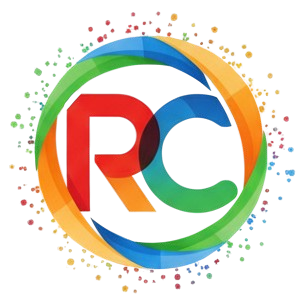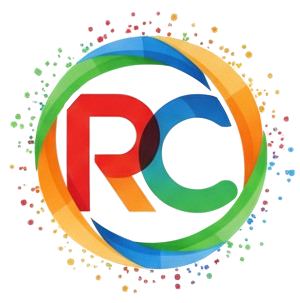How Can You Use Virtual Reality Effectively to Close a High-Ticket Offer?

What is Virtual Reality (VR) in Sales?
Virtual Reality is a technology that creates an immersive, interactive, and three-dimensional environment, allowing users to interact with digital elements in a way that feels real. In the context of sales, VR offers an opportunity to present products or services in a way that traditional methods like brochures, videos, or even in-person demonstrations cannot match. By incorporating VR, businesses can create a personalized, memorable experience that can drive action, particularly when it comes to high-ticket offers.
The Role of Virtual Reality in Closing High-Ticket Offers
Closing a high-ticket offer is never easy, as it typically involves a significant investment from the buyer. However, VR offers unique advantages that can help overcome some of the common hurdles in closing these types of deals. Let’s explore the specific ways in which VR can help
1. Providing an Immersive Experience
The most obvious benefit of VR is its ability to provide an immersive experience. High-ticket items, whether they are luxury products, real estate properties, or sophisticated services, require buyers to fully understand their value. VR can allow potential clients to experience the product or service in a way that is interactive and engaging.
For example, in the real estate industry, VR can let prospective buyers take virtual tours of properties, even if they are not physically present. This is particularly valuable for high-end properties or international clients who might find it difficult to visit the property in person. The immersive experience gives them a deeper understanding of the product and its value, making it easier for them to make a purchase decision.
2. Demonstrating Complex Products or Services
High-ticket offers often involve complex products or services that are difficult to explain through traditional methods. With VR, you can break down these complexities and demonstrate the product in an interactive, easily digestible manner.
For example, if you're selling advanced machinery or high-tech products, VR can allow your potential clients to visualize how the product works in action. This can lead to greater comprehension and trust in the product, increasing the likelihood of a successful sale.
3. Enhancing Engagement and Emotional Connection
People are more likely to make a purchase when they feel an emotional connection to the product or service. VR can significantly enhance this emotional engagement by creating experiences that resonate with the customer on a deeper level.
For instance, VR can transport a customer to a simulated environment that illustrates the benefits of your product in a personalized context. If you're selling luxury vehicles, you can create a VR experience where the potential customer is driving the car through scenic roads or testing out the car’s features in various conditions. This form of engagement can make the product feel more tangible, increasing its perceived value and helping close the sale.
How to Use Virtual Reality to Close a High-Ticket Offer
Now that we understand the potential benefits of VR in closing high-ticket offers, let’s delve into the specific strategies for using VR effectively.
1. Create a Personalized Virtual Experience
Personalization is key when closing high-ticket offers. Prospective clients often expect a tailored experience that addresses their unique needs and preferences. VR allows you to deliver such an experience, making it a great tool for closing high-ticket sales.
You can use VR to create custom scenarios that align with the client’s desires. For example, if you are selling high-end home appliances, you can design a VR experience where the customer is virtually interacting with the appliances in a home that mimics their own. The ability to personalize the VR experience can significantly increase engagement and make the customer feel like the product is specifically designed for them.
2. Show Benefits, Not Just Features
High-ticket offers often rely on demonstrating not just the features of a product but how it benefits the client. VR can be a powerful tool in showing the real-world impact of a product or service, especially when those benefits are intangible or hard to grasp.
For instance, if you're selling a high-tech health monitoring device, rather than just showing the device’s features, you can use VR to demonstrate how the device can track and improve the user’s health. By showcasing the positive effects the product can have on the customer's life, you help build a compelling case for why the investment is worthwhile.
3. Use VR as a Training Tool
For more complex high-ticket offers, especially those involving technical products or services, VR can be used as a training tool. By incorporating training modules into the VR experience, you can demonstrate how the client will be able to use the product or service effectively once purchased. This can reduce any fear or hesitation related to product complexity and increase the likelihood of closing the sale.
For example, if you are selling advanced software solutions, you could design a VR training session that walks the potential client through how the software works and how it will help streamline their operations. Providing this type of hands-on experience before the sale helps buyers feel more confident in their decision.
Best Practices for Using Virtual Reality to Close High-Ticket Offers
To maximize the effectiveness of VR in closing high-ticket offers, it’s important to follow best practices. These practices ensure that the VR experience is engaging, persuasive, and impactful.
1. Keep the VR Experience Focused and Streamlined
While VR offers many possibilities, it’s important not to overwhelm the client with too much information or too many options. The VR experience should be focused and purposeful. Identify the key selling points of your product or service and design the VR experience around them. Too much complexity can lead to confusion, making it harder to close the sale.
2. Integrate VR with Traditional Sales Strategies
While VR is a powerful tool, it should not replace traditional sales techniques. Instead, it should complement them. Use VR as part of a broader sales strategy that includes personal interaction, consultations, and follow-ups. For example, after a VR demo, offer a personal consultation or a one-on-one session to answer any questions the potential client may have.
3. Collect Feedback and Adjust Accordingly
After using VR in a sales pitch, gather feedback from your potential clients. What did they like? What confused them? What could be improved? Continuously collecting feedback allows you to refine your VR experiences and make them even more effective in closing future high-ticket offers.
4. Ensure Accessibility and Compatibility
Not all clients may be familiar with VR technology. It’s important to ensure that the VR experience is easy to use and accessible to everyone, regardless of their technical proficiency. Offering a user-friendly interface and ensuring compatibility across multiple devices can help make the VR experience more accessible to a wider audience.
Measuring the Success of VR in Closing High-Ticket Offers
To determine whether VR is an effective tool in closing high-ticket offers, you’ll need to track specific metrics that provide insight into how well the technology is performing.
1. Conversion Rates
One of the most straightforward ways to measure success is by tracking conversion rates. After a potential client experiences a VR demo, track how many of them go on to make a purchase. If VR significantly increases the conversion rate, then it’s clear that the technology is having a positive impact on sales.
2. Engagement Metrics
Tracking how engaged potential clients are during the VR experience is another useful measure. Metrics like time spent in the virtual environment, interactions with the product, and responses to personalized features can all help gauge how well the experience is resonating with the client.
3. Feedback and Surveys
As mentioned earlier, client feedback is crucial. After the VR experience, send out surveys or ask for verbal feedback to understand how effective the experience was. Look for patterns in the responses to identify areas for improvement.
The Power of Virtual Reality in High-Ticket Sales
Virtual Reality is no longer just a gimmick or a novelty. When used strategically, it has the power to transform the way high-ticket offers are presented and sold. By providing an immersive, engaging experience, demonstrating complex products in action, and building an emotional connection with clients, VR can help you close high-ticket sales more effectively. To truly unlock the potential of VR, it’s important to integrate it into a broader, personalized sales strategy, refine your approach based on feedback, and measure your success over time. When used effectively, VR can be the tool that sets your high-ticket offers apart from the competition and drives your sales success.
Categories
- Arts & Entertainment
- Causes
- Crafts
- Dance
- Drinks
- Film
- Health
- Food Trends
- Gaming
- Home & Garden
- Health & Fitness
- Literature
- Music & Concerts
- Networking
- Other
- Party
- Religion
- Shopping
- Sports
- Theater
- Wellness
- Cryptocurrency
- NFT Trends
- Coin update
- Lifestyle
- Business & Finance
- Entrepreneurship
- Marketing Strategies
- Personal Finance
- Investment Tips
- Industry Trends
- Technology
- Gadgets & Reviews
- Software & Apps
- Cybersecurity
- Emerging Technologies
- How-To Guides
- Education
- Movie & TV Reviews
- Celebrity News
- Book Reviews
- Personal Development
- Motivation & Inspiration
- Life Hacks
- Community & Culture
- Local Events
- Cultural Insights
- Social Issues
- Interviews & Spotlights
- Volunteering & Activism
- Science & Nature
- Animal Behavior
- Beauty Tips
- Fashion Trends
- Product Reviews
- Food & Drink
- Cooking
- Restaurant Reviews
- Travel
- Arts & Crafts
- Photography
- Workout Routines
- Parenting Tips
- News
- Tips & Tricks
- Case Studies
- Product Reviews
- Interviews
- Opinion
- Research & Insights
- Events Coverage
- Personal Stories
- Announcements
- Trends & Predictions
- Guest Posts
Read More
The Mobile Tablets in Healthcare Market sector is undergoing rapid transformation, with significant growth and innovations expected by 2030. In-depth market research offers a thorough analysis of market size, share, and emerging trends, providing essential insights into its expansion potential. The report explores market segmentation and definitions, emphasizing key components and...

Living with frequent migraines can be mentally exhausting and physically draining. Many people are constantly searching for a reliable migraine home remedy that provides lasting relief without harsh side effects. While pills might offer quick fixes, they don’t always treat the underlying cause. That’s why more and more individuals are turning to gentle, natural alternatives that go...

"Blood Lancet Market Size, Share, and Trends Analysis Report—Industry Overview and Forecast to 2032 The Capillary Blood Sampling Devices Market is evolving fast, driven by new technologies, changing consumer needs, and industry trends. According to top Diabetic Fingerstick Devices Market market research firms, businesses are relying more on in-depth insights to stay ahead in the...

Market Overview 2025-2033 The United States seafood market size was valued at USD 24.4 Million in 2024. Looking forward, IMARC Group estimates the market to reach USD 28.5 Million by 2033, exhibiting a CAGR of 1.82% from 2025-2033. The market is experiencing rapid growth, driven by increasing health awareness, urbanization, and rising disposable incomes. Key trends...

Executive Summary Asia-Pacific Insight Engines Market : The Asia Pacific Insight Engines Market size was valued at USD 618.9 million in 2024 and is expected to reach USD 3.10 billion by 2032, at a CAGR of 25.90% during the forecast period. This growth is driven by Rising Adoption of AI and NLP in Enterprises. The Asia-Pacific Insight Engines...




